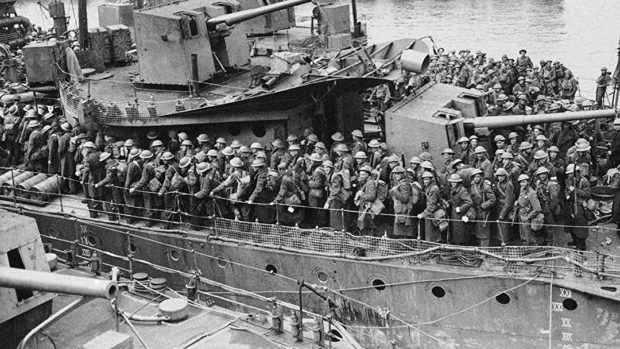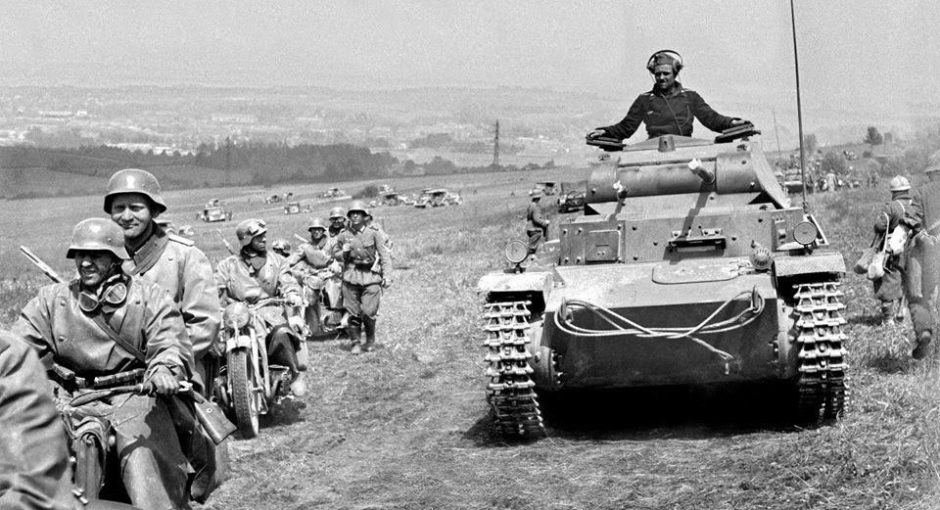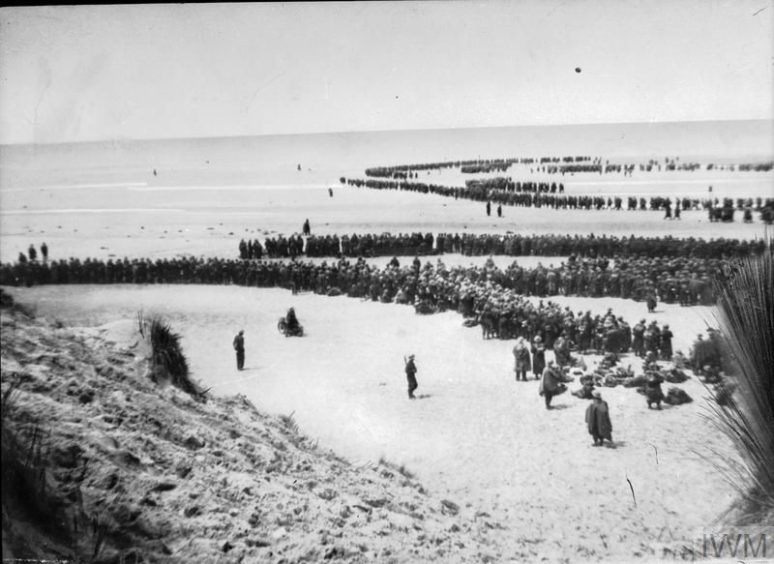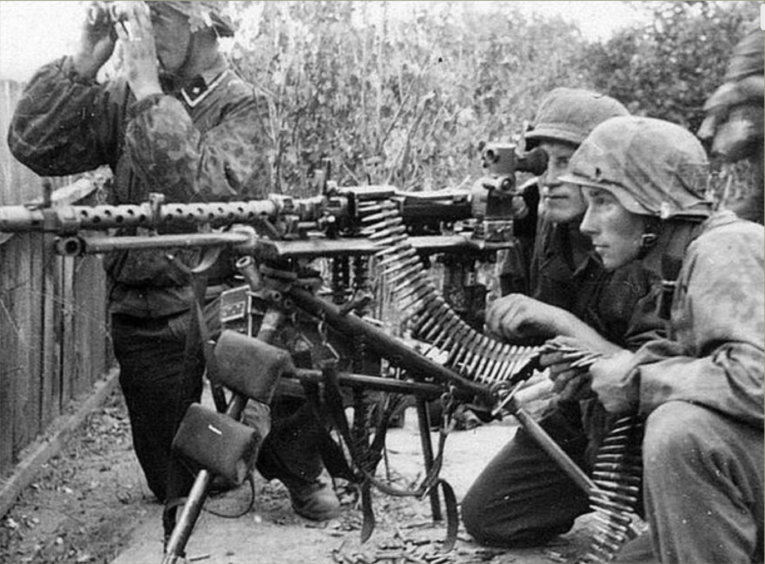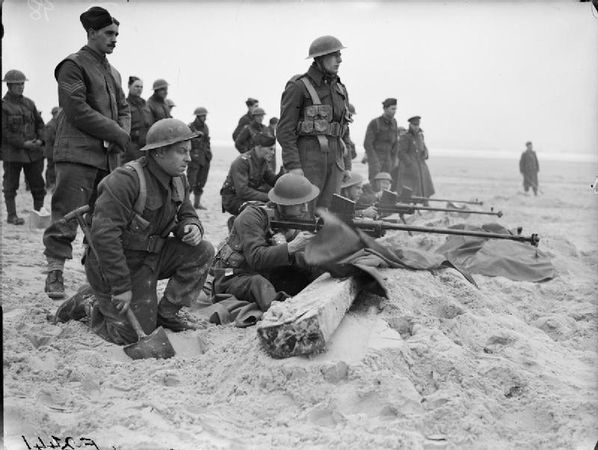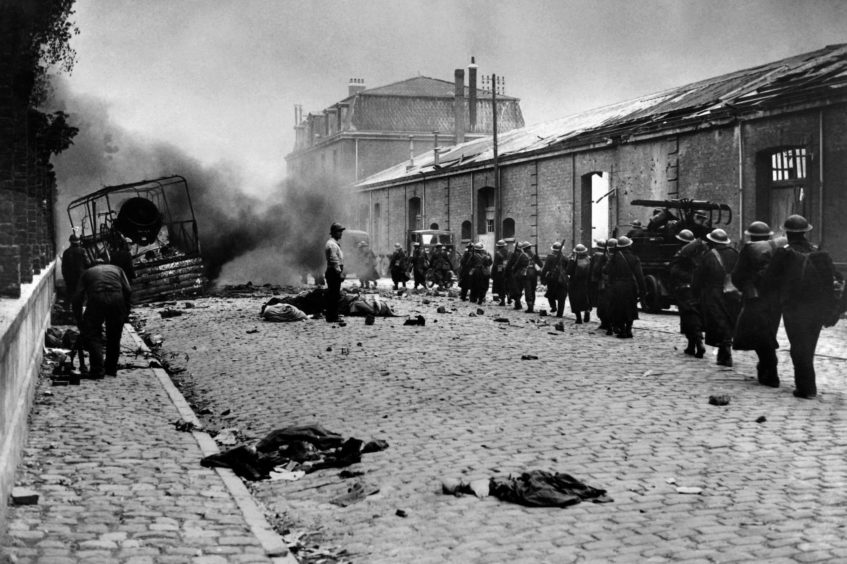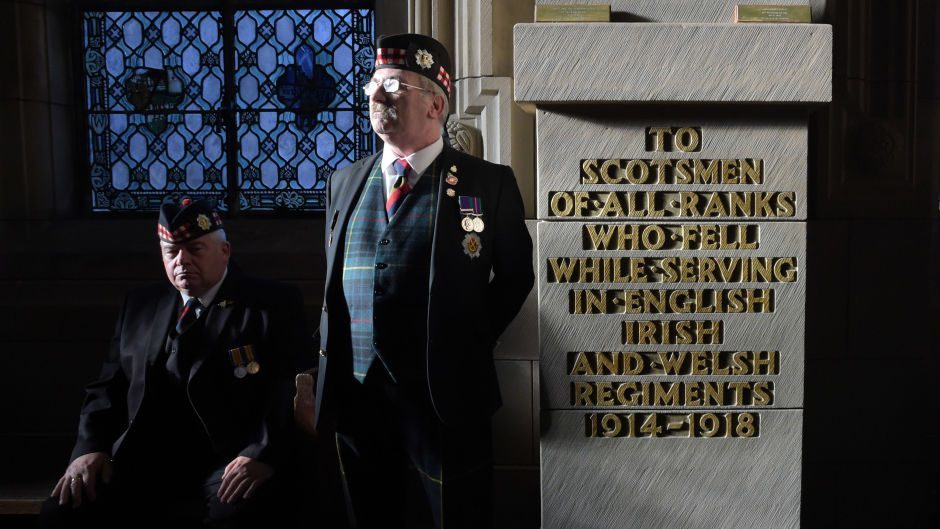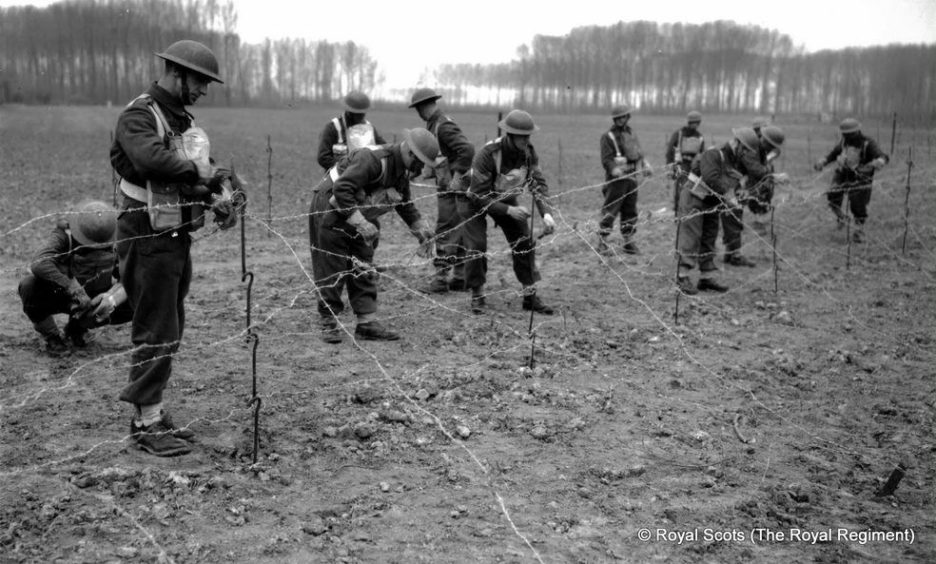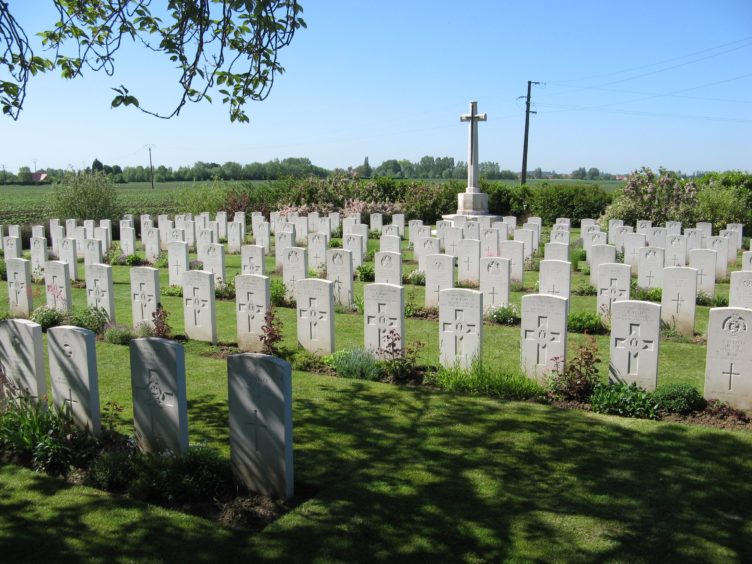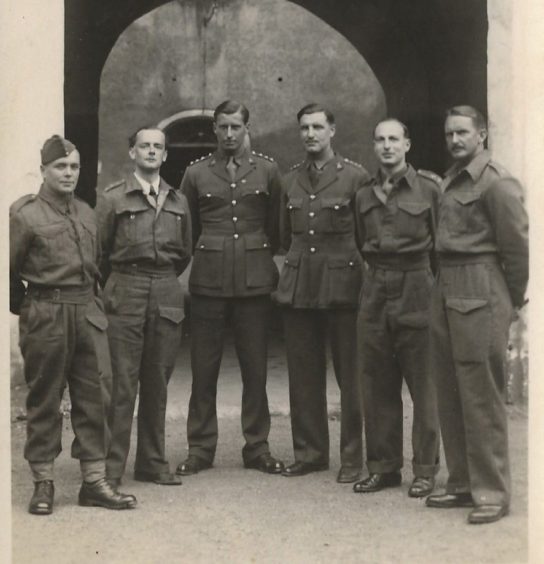They were soldiers who stood up to tyranny even though they knew the dice were stacked against them.
There was no flinching, no thoughts of taking a backward step from the brave men of the Royal Scots when they received the instructions: “Stand, fight and allow the Dunkirk evacuation to happen”, at a site ironically called Le Paradis in 1940.
Ironic, because, in reality, it was a scene of terrible carnage, of visceral warfare and desperate resistance from 1st Battalion as they attempted to help their comrades without any regard for their own circumstances.
On May 25 1940, the remaining members of the battalion, numbering fewer than 400, prepared for their last stand at Le Paradis, 30 miles from Dunkirk in north-east France.
These soldiers all realised they faced a dreadful choice – be killed or be captured – but they played a pivotal role in enabling the withdrawal of 337,000 Allied Forces and equipment from the beaches of Dunkirk throughout the now-famous withdrawal.
However, the valiant three-day rearguard action against overwhelming odds gradually, inexorably led to the battalion’s destruction.
At the start of the operation on May 10, the 1st Battalion were some 770 strong; at the end on May 27, 141 men had been killed and more than 350 wounded.
A mere handful escaped back to the UK amidst many acts of outstanding bravery and sacrifice. By the end of the group’s heroics, 292 Royal Scots were captured and became prisoners of war and the majority of them were wounded.
The gallantry which marked their exertions eventually led to two Distinguished Service Orders, three Distinguished Conduct Medals, two Military Crosses, one Military Medal and 16 Mentioned in Dispatches being awarded.
Colonel Martin Gibson said: “This is a soldier’s story.
“Though the Royal Scots had been in continuous action for 17 days, had travelled over 200 miles and had suffered heavy casualties, their fighting spirit was undaunted.
“The Royal Scots, professional soldiers doing what they had signed up to do, fought ferociously to the last man at Le Paradis.
“Their contribution to Dunkirk was vital. We should never forget that the vast majority of those who survived spent the next five years as prisoners of war.”
In the lead-up to the 80th anniversary of the successful evacuation from Dunkirk, the Royal Scots Regimental family had been determined to relate this untold story and belatedly bring it to the attention of a wider audience.
Fifty members of the regiment were originally scheduled to attend a commemorative event in Le Paradis, but this had to be cancelled due to the current lockdown.
So the Royal Scots have now organised a Zoom event today which is being recorded and will be available on the web site, YouTube and Facebook.
Those who have poignant memories of the campaign include George Simpson, aged 100, who lives just outside Edinburgh.
He was wounded and captured at Le Paradis and was a PoW for five years in Poland.
One of his colleagues, John Errington, 101, from Shrewsbury was a Signals Officer, who was also captured and incarcerated for five years until the end of the war.
It’s a measure of the stoic attitude of these fellows that they regard themselves as the lucky ones – men who were offered the chance to return home and grow old.
But that doesn’t diminish their privations after they landed in France in September 1939 as part of the 4th Brigade of the 2nd Division of the British Expeditionary Force.
For the next eight months, The Royal Scots prepared and manned defences across northern France, including the massive concrete fortresses of the French Maginot Line.
When the German attack, in the west, finally began on the May 10 1940, the battalion crossed into Belgium and had their first contact with the enemy, west of Brussels.
As the Allied forces were pushed back by the German blitzkrieg, The Royal Scots withdrew across the French border.
Meanwhile, the Germans raced for the Channel coast, splitting the British Expeditionary Force off from their Allies and plans for its evacuation were hastily prepared.
As the Germans turned north, it became vital that their advance was delayed long enough for the main part of the British Army to reach the beaches at Dunkirk.
The BEF were up against a far better equipped and a much stronger enemy, which made their phased defence and withdrawal actions even more difficult.
The battalion had defended four major river lines in their withdrawal from Belgium.
They were constantly under attack by the Germans; for example, on May 21 and 22, defending the line of the River Escaut, they suffered 150 casualties in two days.
Their withdrawal culminated at Le Paradis between May 25 and 27. The men were exhausted, low on ammunition and very lightly equipped to defend against an armoured and air attack.
On May 25, the 2nd Battalion The Royal Norfolk Regiment received the full weight of the enemy attack on the La Bassee Canal, sustaining heavy casualties.
Then, for two days, The Royal Scots fought a very committed and valiant rear-guard defence against overwhelming odds. Eventually, through constant attrition, they were reduced to isolated small units. Only the very brave, but fatal action of Pipe Major Allan prevented the Battalion headquarters from being overrun.
He single-handedly held up the German advance with a Bren gun until he was killed.
During these three days, there were numerous other acts of considerable bravery.
Their ferocious defence at Le Paradis inflicted heavy losses on the enemy, and seriously damaged the confidence of the SS ‘Totenkopf’ Division with whom they locked horns.
Most importantly, it delayed the German advance, allowing thousands of British troops to reach the beaches of Dunkirk.
Although they had been in continuous action for seventeen days, had travelled over 200 miles and suffered heavy casualties in the process, their fighting spirit was undaunted.
Afterwards, at a hospital, one of the German officers, on handing over some wounded Royal Scots to a Chaplain stated: “They fought like lions”.
Later, after the war, the captured French liaison officer, Lieutenant Michel Martell, attached to The Royal Scots wrote: “During the five years of waiting for our freedom, after living with The Royal Scots, I could never despair of seeing Germany beaten.”
They are words which explain why their actions should never be forgotten.
Further information about the Battalion can be found at www.theroyalscots.co.uk/
